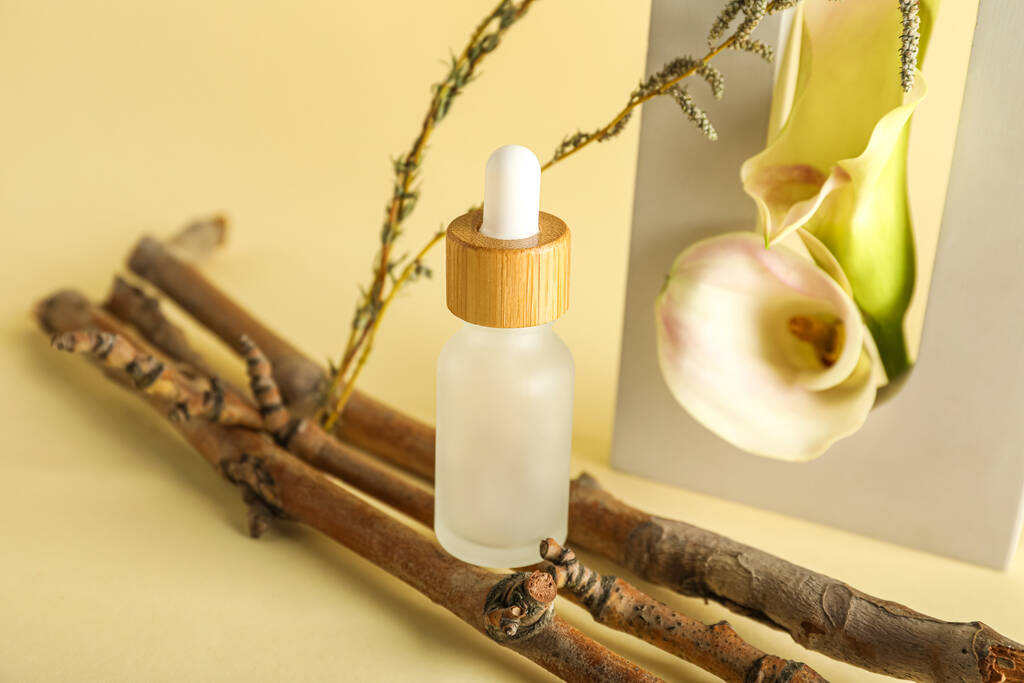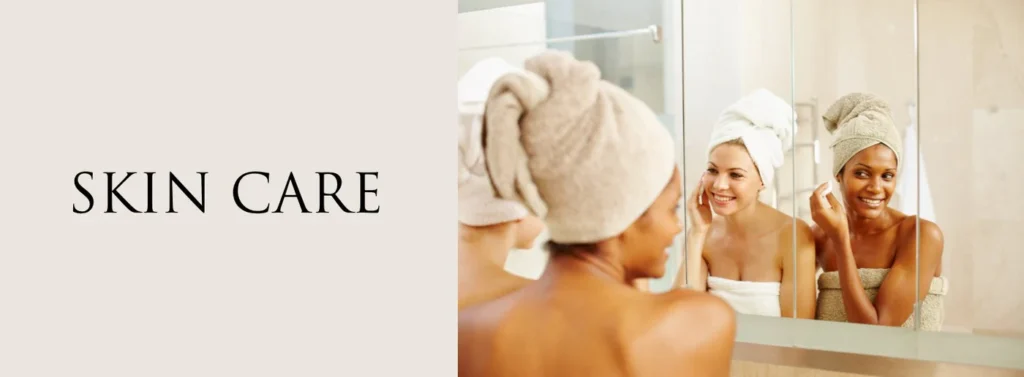Decorating for a skincare product photoshoot, especially when incorporating wallpaper as a backdrop or an element of visual interest, requires a thoughtful approach to ensure the product stands out and the overall aesthetic aligns with the brand’s image. Here are some tips to enhance your photoshoot with wallpaper decoration:
1. Choose the Right Wallpaper
- Pattern and Color: Select a wallpaper that complements the product packaging. If the packaging is minimalist, a subtle pattern or texture can add depth without overwhelming. For more vibrant packaging, choose a simpler background to keep the focus on the product.
- Theme Consistency: Ensure the wallpaper aligns with the brand’s theme and product line. A botanical-themed wallpaper might work well for organic skincare product and natural skincare products.
The theme color for organic skincare products often draws from the natural and earthy palette, symbolizing the purity, natural origin, and eco-friendliness of the ingredients used in these products. Colors such as soft greens, earthy browns, tranquil blues, and pastel yellows are commonly used to represent the connection with nature, the organic farming practices, and the gentle effect on the skin and the environment. These colors aim to evoke a sense of calm, cleanliness, and sustainability, aligning with the ethos of organic skincare: - Soft Greens: Represent the natural world, growth, and vitality. Soft greens are reminiscent of leaves, plants, and the outdoors, emphasizing the organic origins of the skincare products.
- Earthy Browns: Symbolize the earth from which the organic ingredients are harvested. Browns convey stability, reliability, and a return to nature, grounding the products in a sense of wholesomeness and natural efficacy.
- Tranquil Blues: Reflect purity, trust, and serenity. Blues can be reminiscent of clear skies and clean water, suggesting the clarity and purity of the ingredients and the production process.
- Pastel Yellows: Suggest sunlight, energy, and optimism. Light yellows can evoke the warmth of the sun, which nurtures the organic ingredients as they grow, and suggest the positive effects of the products on the skin.
These theme colors not only serve to visually distinguish organic skincare products from others on the market but also communicate the brand’s commitment to natural ingredients, sustainable practices, and the overall well-being of the consumer and the planet. Packaging and branding that utilize these colors often also incorporate natural textures and materials, further reinforcing the connection to the earth and the products’ organic credentials.

2. Lighting
- Natural Light: Use natural light when possible to highlight the product’s texture and true colors. Position the product near a window to achieve a soft, diffused light.
- Artificial Lighting: If natural light isn’t an option, use softbox lights to mimic it. The right lighting can make the wallpaper’s texture and color pop, enhancing the product’s appearance.
3. Composition and Framing
- Rule of Thirds: Place the product off-center to make the composition more interesting. Use the wallpaper’s pattern as a guide to align your product aesthetically.
- Depth of Field: Use a shallow depth of field to blur the wallpaper slightly if it’s too busy, keeping the focus on the product.
4. Props and Accessories
- Complementary Props: Add props that complement the product and the wallpaper’s theme, such as natural elements for organic products or luxurious fabrics for premium lines.
- Minimalism: Keep props to a minimum to avoid clutter and keep the focus on the product. Choose items that add to the story of the skincare product, like a splash of water or fresh ingredients depicted in the product.
5. Product Placement
- Angle and Orientation: Experiment with different angles and orientations of the product against the wallpaper. Sometimes, a diagonal placement or having the product partially overlap with an interesting part of the wallpaper pattern can create a dynamic look.
- Reflections and Shadows: Be mindful of how the product’s surface interacts with the light and the wallpaper. Glossy packages can reflect interesting wallpaper patterns, while matte surfaces might absorb light, affecting how the color and texture appear.
6. Editing and Post-Production
- Enhance Colors and Contrast: In post-production, adjust the colors, brightness, and contrast to ensure the wallpaper enhances the product rather than detracting from it.
- Retouching: Remove any distractions or imperfections from the wallpaper that could draw attention away from the product.
7. Brand Consistency
- Align with Marketing Materials: Ensure the wallpaper and overall aesthetic of the photoshoot align with existing marketing materials and social media content for brand consistency.
When planning your photoshoot, consider creating a mood board that includes the wallpaper, product, props, and lighting setups to visualize how everything will come together. This preparatory step can help refine your concept and ensure a cohesive look that beautifully showcases your skincare products.
8. Wallpaper Texture and Material
- Texture Impact: Beyond patterns and colors, the texture of the wallpaper can add an extra layer of depth to your photos. Textured wallpapers, such as those with a linen or embossed finish, can provide a tactile element that subtly complements the product’s physical attributes.
- Reflective Surfaces: Metallic or glossy wallpapers can introduce interesting reflective qualities into your photoshoot. Use these to create dynamic lighting effects or to highlight the moisturizing or illuminating properties of skincare products.
9. Scale and Perspective
- Play with Scale: Use the scale of the wallpaper’s pattern to your advantage. Large-scale patterns can create bold backgrounds for close-up shots, while smaller patterns might be more suitable for wider shots where the product is not the sole focus.
- Perspective Tricks: Shooting at an angle against a patterned wallpaper can create a sense of movement or depth, making the product appear more dimensional and engaging.
10. Color Harmony
- Color Theory: Apply color theory to select a wallpaper that complements or contrasts with the product’s color palette in a way that evokes the desired emotional response. For instance, green hues can emphasize natural and organic qualities, while blues might highlight hydration and freshness.
- Background vs. Product: Ensure there is enough contrast between the product and the wallpaper so that the item doesn’t blend into the background, especially for products with neutral or transparent packaging.
11. Focal Point and Clarity
- Sharp Focus: Ensure the product remains the sharpest point of focus in your image, especially if the wallpaper has a busy pattern. Use aperture settings to control the depth of field and keep the product in sharp focus against a softer background.
- Highlight Key Features: Use the wallpaper to frame or highlight key features of the product, such as the texture of a cream or the sheen of an oil. This can be achieved through strategic lighting and positioning relative to the wallpaper.
12. Storytelling through Background
- Narrative Elements: Let the wallpaper contribute to the story you’re telling about the product. A vintage floral wallpaper might suggest tradition and heritage for a long-established brand, while a sleek, geometric pattern could imply modernity and innovation for a cutting-edge skincare line.
- Seasonal or Thematic Shoots: Consider changing wallpapers for seasonal promotions or themed product launches. This keeps your visual content fresh and aligned with current campaigns.
13. Consistency Across Product Range
- Series Cohesion: If shooting a range of products, maintain a consistent style or theme in the wallpaper used across all images. This cohesion helps in creating a unified brand look, making it easier for customers to recognize your products across different platforms.
